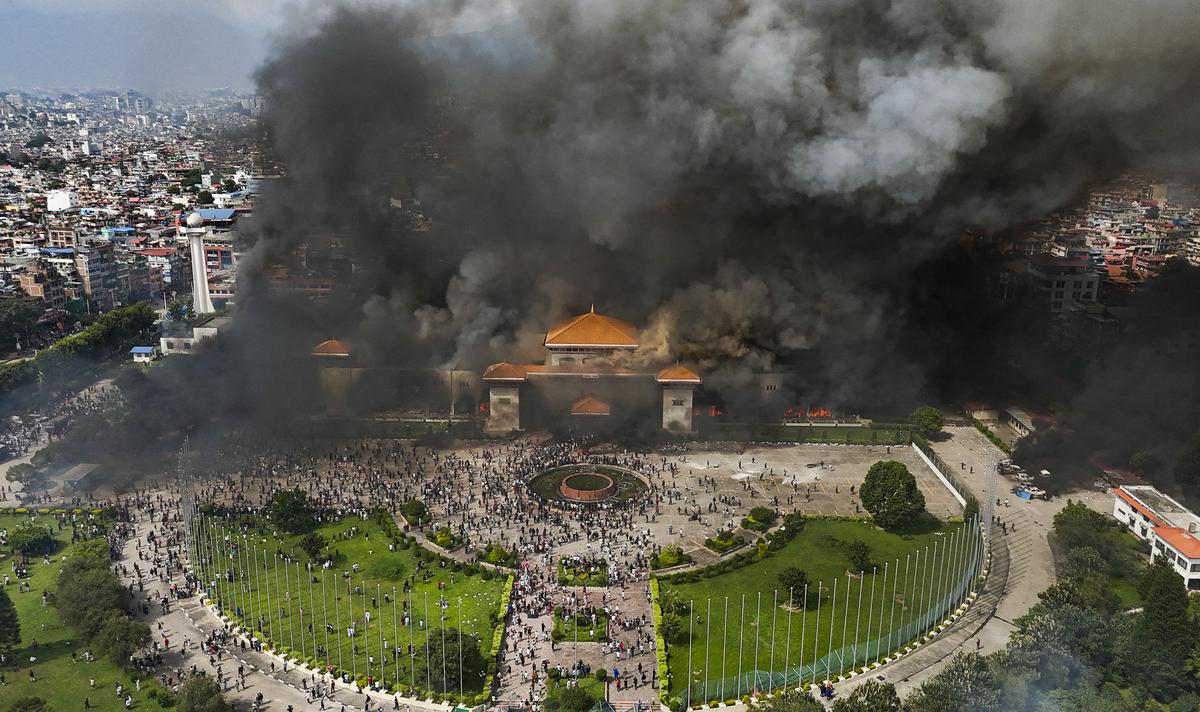Infrastructure Upgrade and Traffic Management in Palm Beach County: A Case Study in Sustainable Development
A temporary closure of Northlake Boulevard for a critical infrastructure project provided a real-world test of Palm Beach County’s ability to manage urban mobility and uphold principles of sustainable development. The project, while causing short-term inconvenience, highlights a commitment to advancing Sustainable Development Goals (SDGs), particularly SDG 9 (Industry, Innovation, and Infrastructure) and SDG 11 (Sustainable Cities and Communities).
Enhancing Infrastructure for Sustainable Communities (SDG 9 & SDG 11)
Project Overview: CSX Rail Signal Upgrade
The closure of Northlake Boulevard at the Beeline Highway was necessitated by freight rail company CSX to perform essential upgrades on its rail signals. This initiative directly supports SDG 9, which calls for building resilient, reliable, and sustainable infrastructure to support economic development and human well-being. The project’s timeline was strategically planned to conclude by August 10, ensuring completion before the start of the school year on August 11, thereby minimizing disruption to educational access, a consideration aligned with SDG 4 (Quality Education).
Impact on Community Mobility and Economic Activity
The closure of a primary east-west artery temporarily shifted traffic patterns, affecting the daily commutes and economic activities of several communities. This underscores the importance of robust infrastructure for SDG 8 (Decent Work and Economic Growth).
- Commuters from The Acreage and Loxahatchee were rerouted.
- Increased traffic volume was observed on Southern and Okeechobee Boulevards.
- The rerouting merged traffic flows from semi-rural areas with those from Wellington and Royal Palm Beach.
Proactive Traffic Management and Public Safety (SDG 11 & SDG 3)
Inter-agency Coordination and Technological Intervention
In response to the anticipated congestion, a coordinated effort was deployed to manage traffic flow, reflecting the aims of SDG 11 to make cities safe, resilient, and sustainable. Palm Beach County traffic engineers and the Palm Beach County Sheriff’s Office (PBSO) worked in tandem to mitigate gridlock.
- Active Monitoring: Traffic engineers continuously monitored traffic light cameras at key intersections.
- Manual Control: Traffic signals were manually controlled to adapt to real-time conditions and maintain vehicle flow.
- Technological Aids: PBSO personnel utilized traffic control devices, referred to as “pickles,” to manually trigger green lights where needed, preventing excessive backups.
An official with the Indian Trail Improvement District noted the effectiveness of these measures, stating, “Whoever was running that, they were spot on with the cameras and running the lights.”
Safeguarding Community Well-being
The successful management of traffic congestion was crucial for maintaining public health and safety, a core component of SDG 3 (Good Health and Well-being). By preventing a standstill, authorities helped to:
- Reduce potential air pollution from idling vehicles.
- Minimize commuter stress associated with extreme delays.
- Ensure that emergency services remained effective. Palm Beach County Fire Rescue confirmed that operations proceeded smoothly, stating, “Traffic congestion moved very smoothly.”
Assessment and Key Outcomes
Analysis of Traffic Conditions
While initial concerns pointed toward the possibility of severe gridlock, the reality was more manageable. The most significant congestion occurred during the 5 p.m. rush hour on August 4, with backups extending for at least a mile at specific points. However, traffic flowed smoothly during other periods.
- Okeechobee Boulevard: Experienced major backups at State Road 7 and Royal Palm Beach Boulevard.
- Southern Boulevard: Saw the heaviest traffic at Binks Forest Drive and Royal Palm Beach Boulevard.
- Coconut Boulevard: Showed a continuous but moving line of vehicles at its intersection with Orange Boulevard.
Community and Official Response
The overall assessment from local officials and residents was positive. The situation was characterized by an Indian Trail Improvement District official as an “inconvenience but not an emergency.” This outcome demonstrates successful planning and execution, fostering community resilience in line with SDG 11.
Analysis of Sustainable Development Goals in the Article
1. Which SDGs are addressed or connected to the issues highlighted in the article?
The article discusses issues related to traffic management, infrastructure upgrades, and community impact, which connect to the following Sustainable Development Goals (SDGs):
-
SDG 9: Industry, Innovation and Infrastructure
This goal is central to the article as the entire situation is caused by an infrastructure project. The closure of Northlake Boulevard is for CSX to upgrade its rail signals and tracks. This directly relates to building and maintaining resilient and reliable infrastructure.
-
SDG 11: Sustainable Cities and Communities
The article focuses on the impact of the road closure on communities like The Acreage and Loxahatchee. It details the effects on commuters and the measures taken to manage traffic flow in a populated area. This connects to making human settlements safe and resilient, particularly concerning transportation systems.
-
SDG 3: Good Health and Well-being
This goal is relevant through the lens of road safety and emergency service access. The efforts to prevent “chaos” and “gridlock” are implicitly aimed at preventing accidents. The article explicitly mentions that Palm Beach County Fire Rescue confirmed that “Traffic congestion moved very smoothly,” indicating that emergency response capabilities were not compromised, which is crucial for community health and safety.
2. What specific targets under those SDGs can be identified based on the article’s content?
Based on the article’s content, the following specific targets can be identified:
-
Target 9.1: Develop quality, reliable, sustainable and resilient infrastructure… to support economic development and human well-being.
The core reason for the traffic disruption is the work by “freight rail company CSX” to upgrade “its tracks at that crossing” and “its rail signals.” This project is a direct effort to develop more reliable and resilient transportation infrastructure, which supports both economic activity (freight) and human well-being (commuter safety and efficiency in the long term).
-
Target 11.2: Provide access to safe, affordable, accessible and sustainable transport systems for all, improving road safety.
The article details the response to the infrastructure shutdown, focusing on maintaining a functional transport system. The actions of “Palm Beach County Sheriff’s Office traffic personnel” and “County traffic engineers” to “manually control” traffic lights and “keep traffic flowing as smoothly as possible” are direct efforts to ensure the transport system remains safe and accessible, even under strain.
-
Target 3.6: Halve the number of global deaths and injuries from road traffic accidents.
The proactive traffic management described in the article is a measure to ensure road safety. By preventing “chaos” and “standstill” traffic, authorities mitigate the risk of traffic accidents that can occur in such conditions. The statement from an official that the situation was an “inconvenience but not an emergency” highlights the successful management of potential safety risks.
3. Are there any indicators mentioned or implied in the article that can be used to measure progress towards the identified targets?
Yes, the article mentions several qualitative and quantitative indicators that can be used to measure progress or success:
-
Indicators for Target 9.1 (Resilient Infrastructure)
- Project Completion Timeline: The article states the project is “on track to finish by Aug. 10,” ahead of the school start date of Aug. 11. The timely completion of the infrastructure upgrade is a direct indicator of progress.
-
Indicators for Target 11.2 (Transport Systems)
- Traffic Congestion Levels: The article provides specific data points, such as “backups at least a mile long” at certain intersections, which serve as a quantitative indicator of congestion.
- Commute Time Impact: The article notes that “fears of hours-long gridlock did not become reality,” implying that the increase in commute time was kept below a critical threshold.
- Qualitative Assessment of Traffic Flow: Statements like “traffic on those roads and others flowed smoothly” and “Traffic was moving” serve as qualitative indicators of the effectiveness of traffic management.
- Public Satisfaction/Complaints: The observation that “Few complaints could also be seen on the Facebook group” is an indicator of public perception and satisfaction with the management of the transport system during the disruption.
-
Indicators for Target 3.6 (Road Safety)
- Emergency Service Response: The confirmation from the “Palm Beach County Fire Rescue spokeswoman” that “Traffic congestion moved very smoothly” is an indicator that emergency response routes were kept clear, a key component of road and community safety.
- Absence of Major Incidents: The characterization of the event as an “inconvenience but not an emergency” by a local official implies an absence of major accidents or safety crises, serving as a critical success indicator.
4. Table of SDGs, Targets, and Indicators
| SDGs | Targets | Indicators |
|---|---|---|
| SDG 9: Industry, Innovation and Infrastructure | 9.1: Develop quality, reliable, sustainable and resilient infrastructure. |
|
| SDG 11: Sustainable Cities and Communities | 11.2: Provide access to safe, affordable, accessible and sustainable transport systems for all. |
|
| SDG 3: Good Health and Well-being | 3.6: Halve the number of global deaths and injuries from road traffic accidents. |
|
Source: palmbeachpost.com







